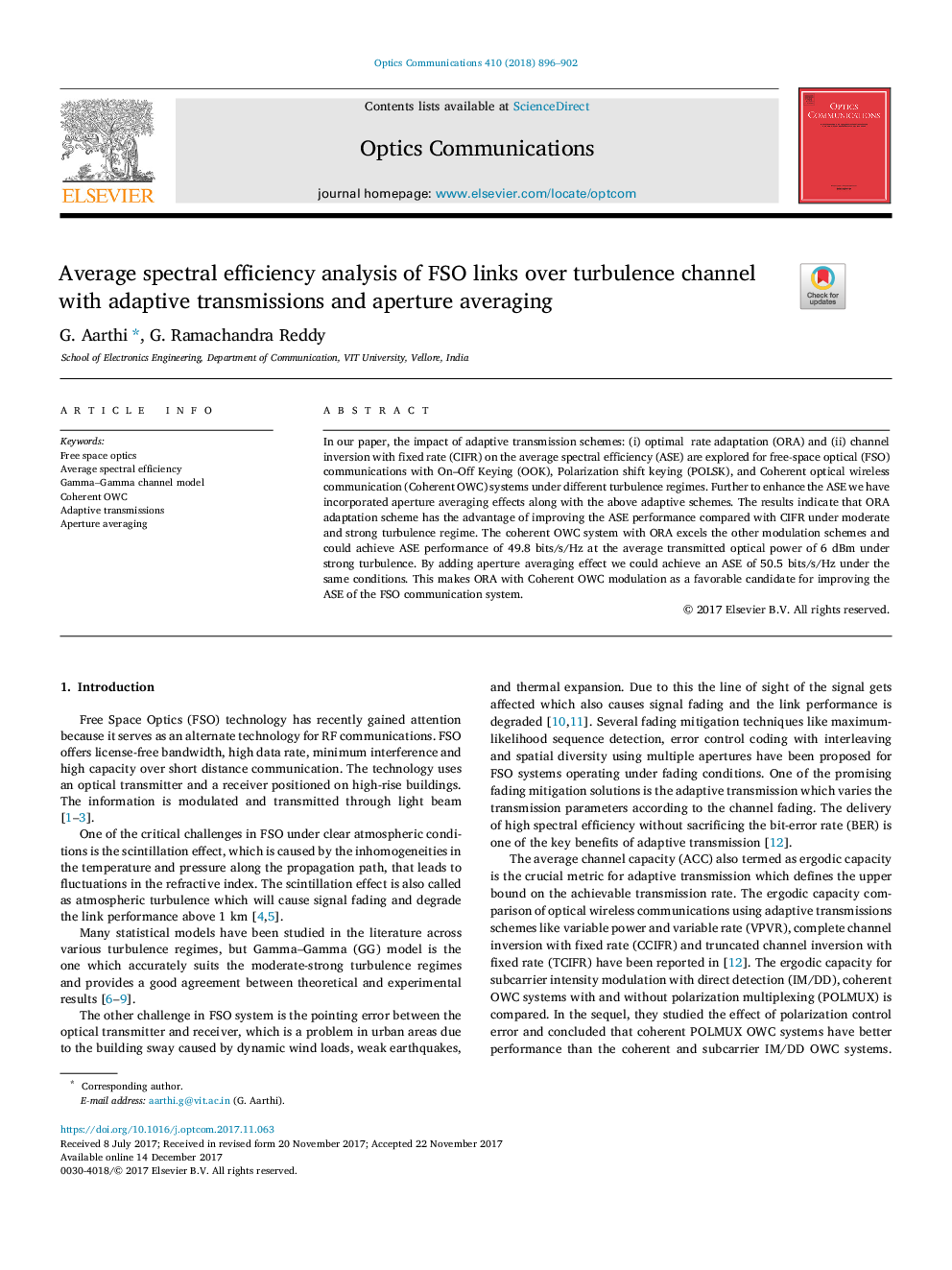| Article ID | Journal | Published Year | Pages | File Type |
|---|---|---|---|---|
| 7926297 | Optics Communications | 2018 | 7 Pages |
Abstract
In our paper, the impact of adaptive transmission schemes: (i) optimal rate adaptation (ORA) and (ii) channel inversion with fixed rate (CIFR) on the average spectral efficiency (ASE) are explored for free-space optical (FSO) communications with On-Off Keying (OOK), Polarization shift keying (POLSK), and Coherent optical wireless communication (Coherent OWC) systems under different turbulence regimes. Further to enhance the ASE we have incorporated aperture averaging effects along with the above adaptive schemes. The results indicate that ORA adaptation scheme has the advantage of improving the ASE performance compared with CIFR under moderate and strong turbulence regime. The coherent OWC system with ORA excels the other modulation schemes and could achieve ASE performance of 49.8 bits/s/Hz at the average transmitted optical power of 6 dBm under strong turbulence. By adding aperture averaging effect we could achieve an ASE of 50.5 bits/s/Hz under the same conditions. This makes ORA with Coherent OWC modulation as a favorable candidate for improving the ASE of the FSO communication system.
Keywords
Related Topics
Physical Sciences and Engineering
Materials Science
Electronic, Optical and Magnetic Materials
Authors
G. Aarthi, G. Ramachandra Reddy,
